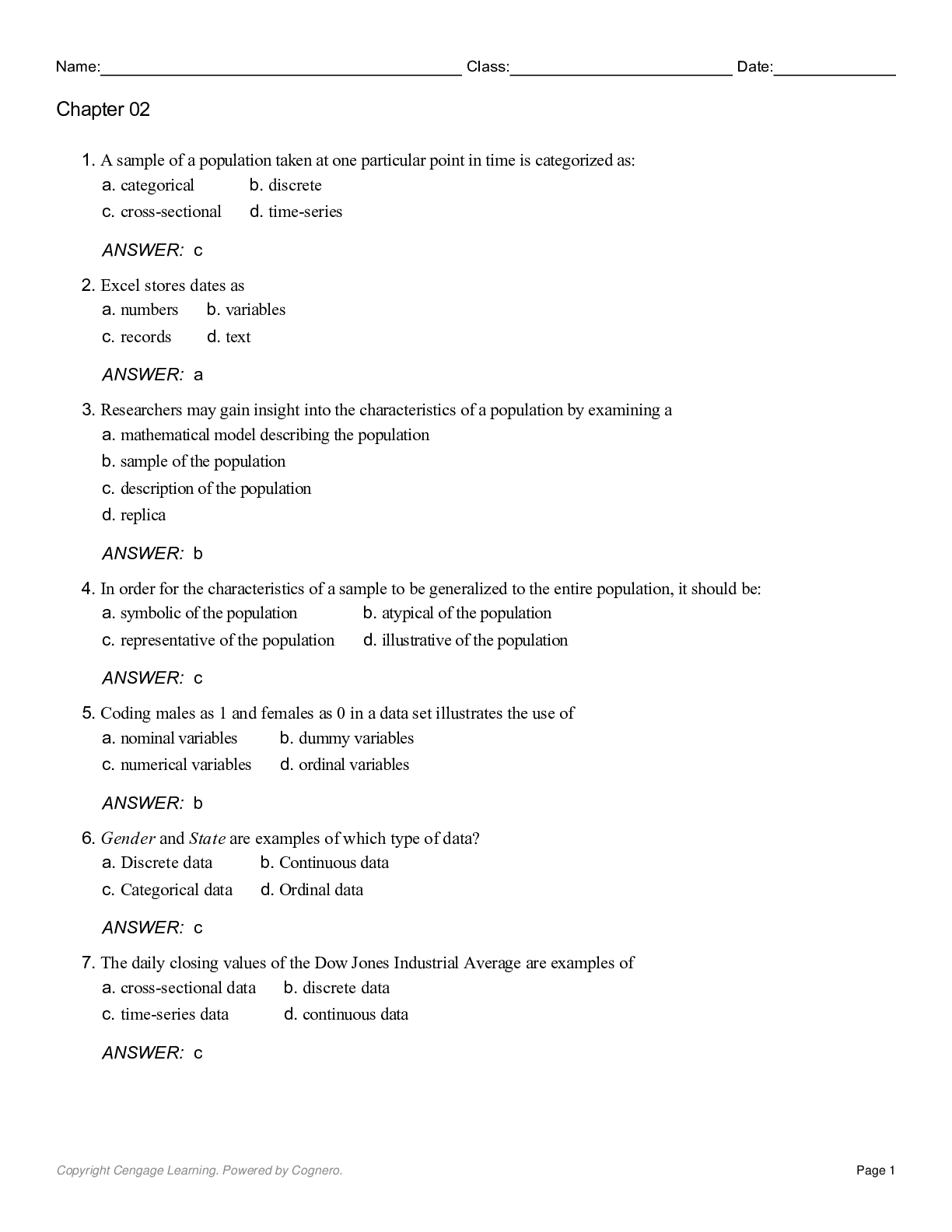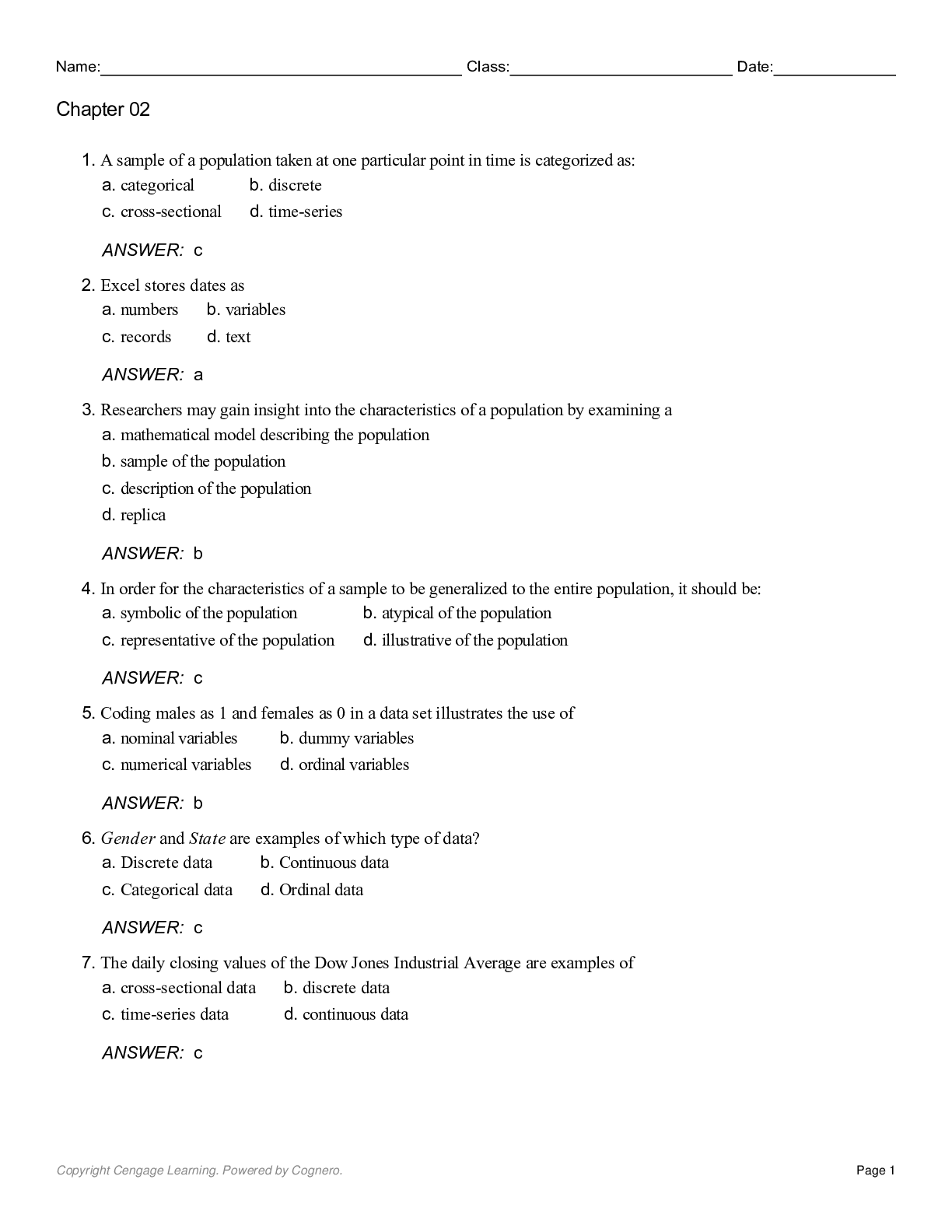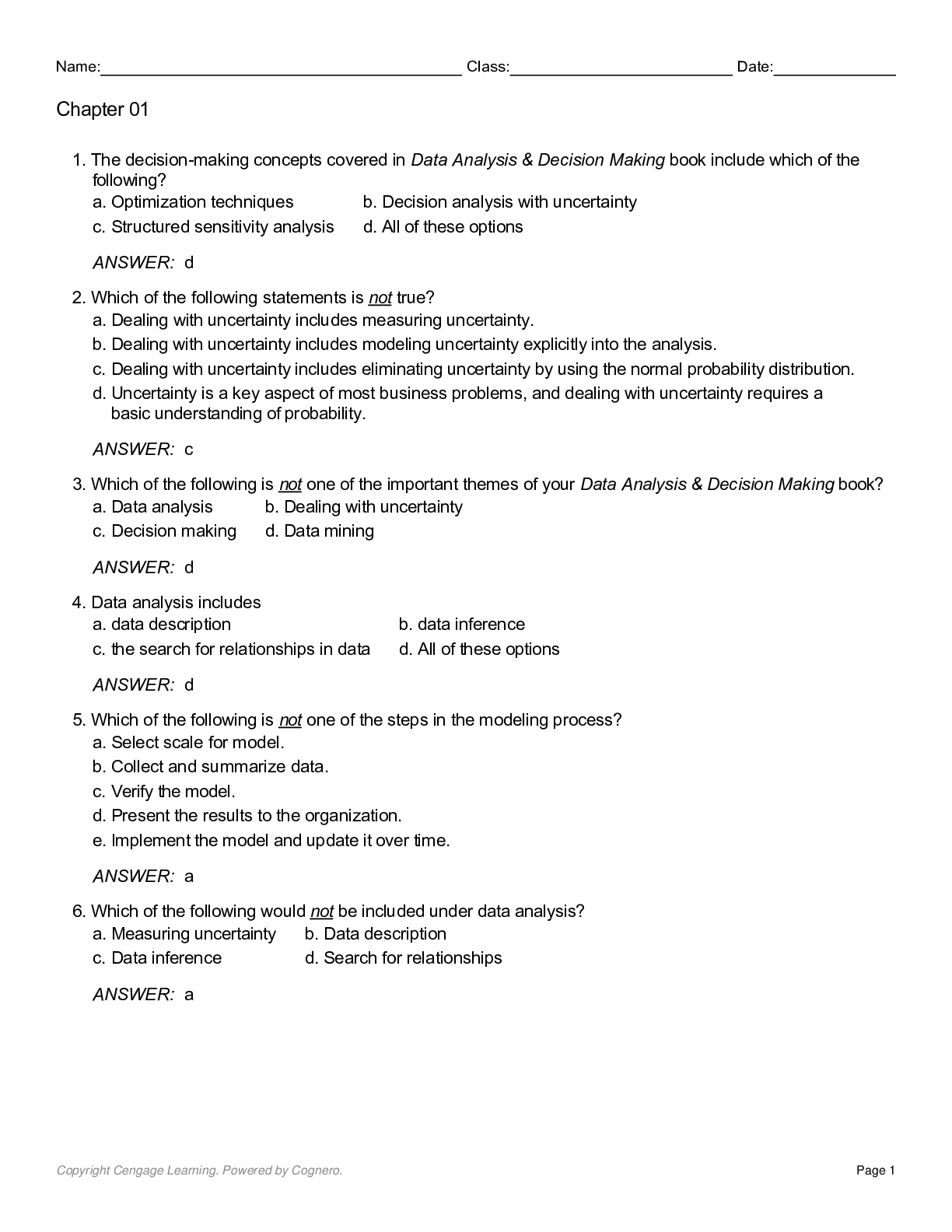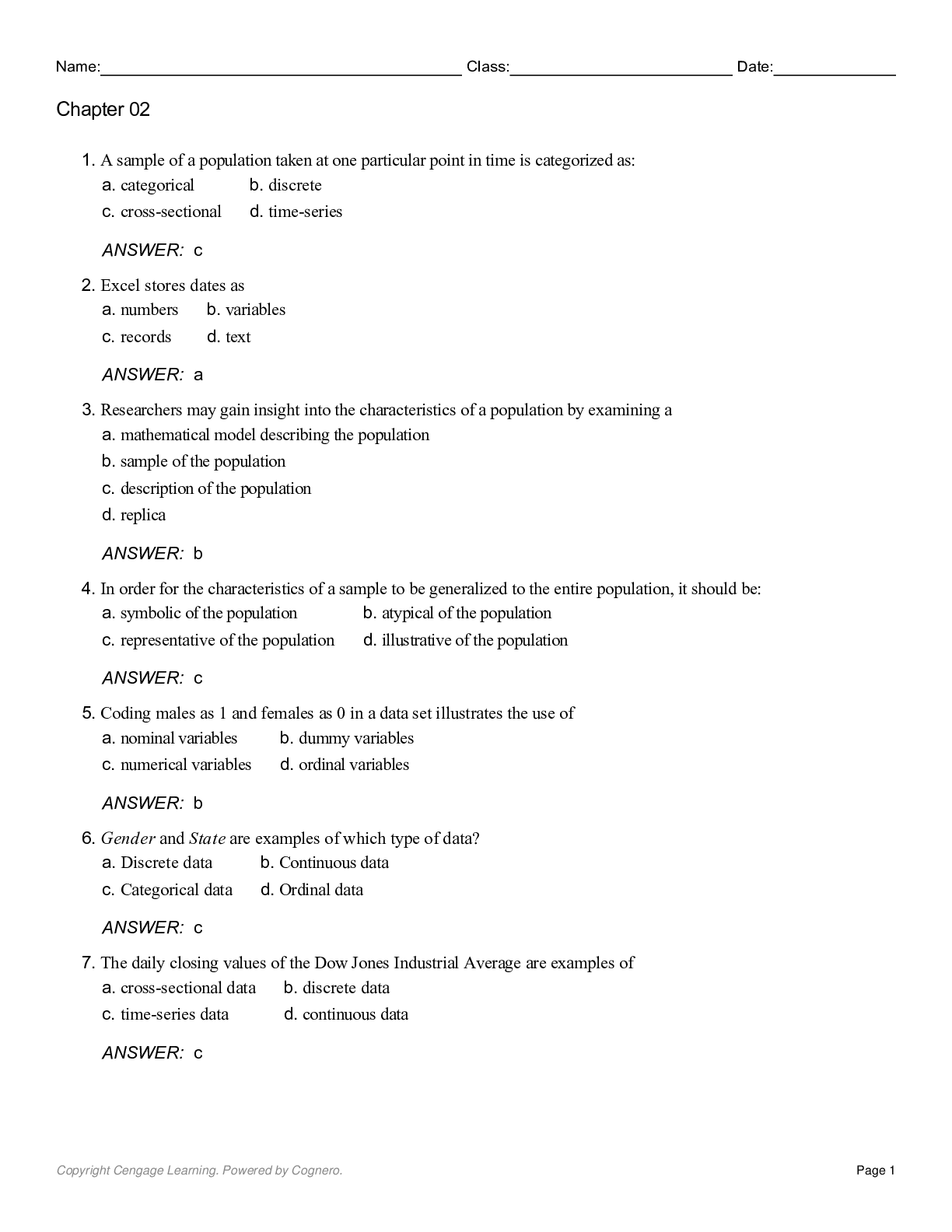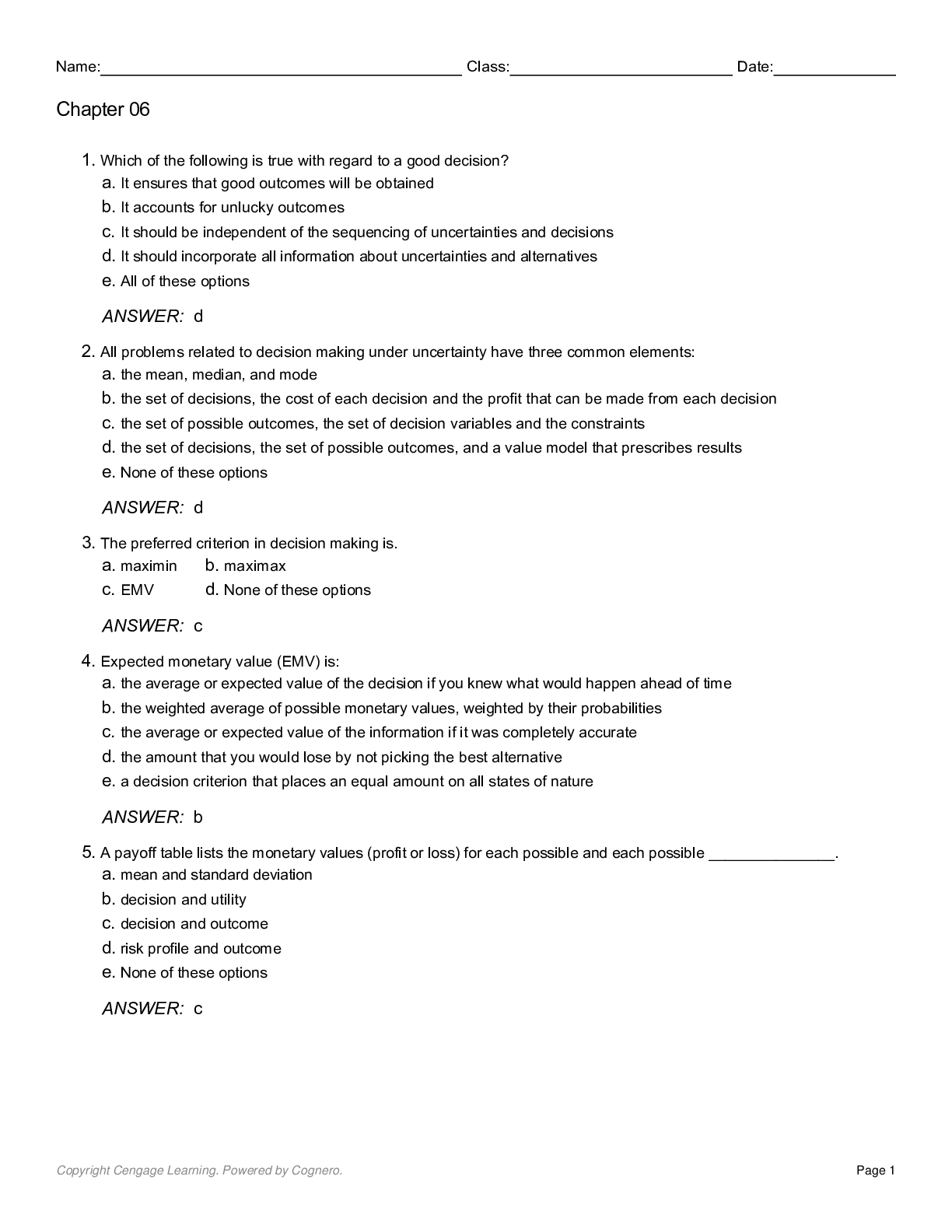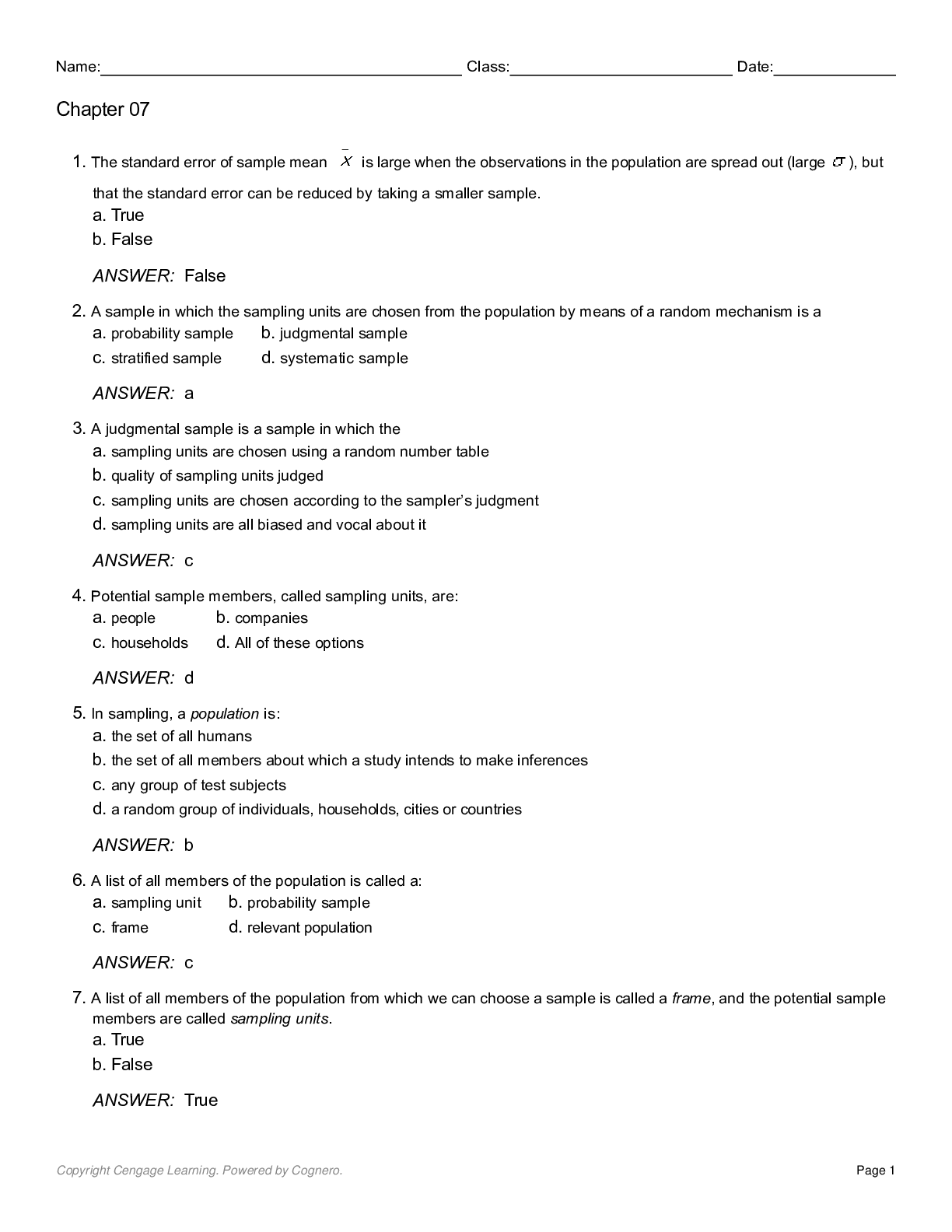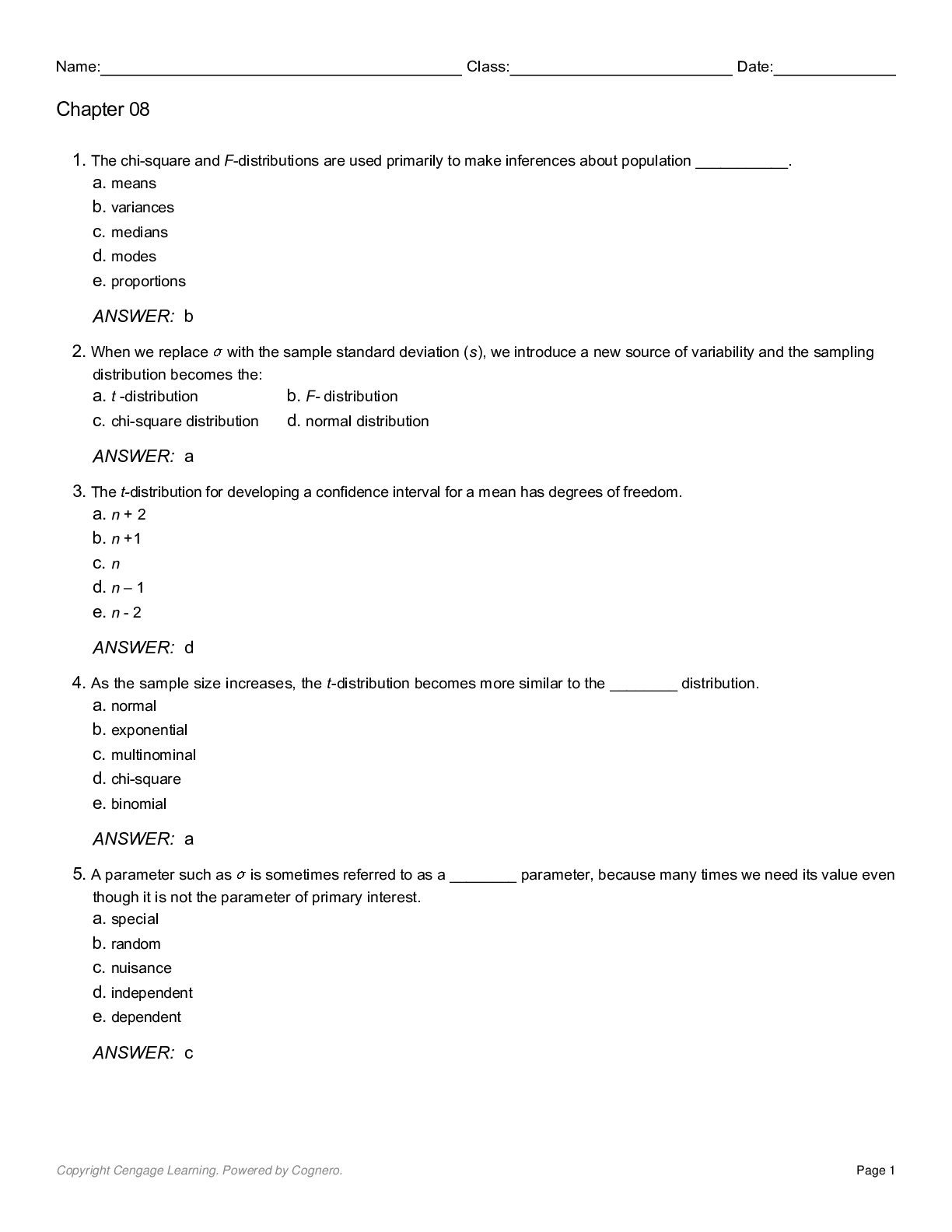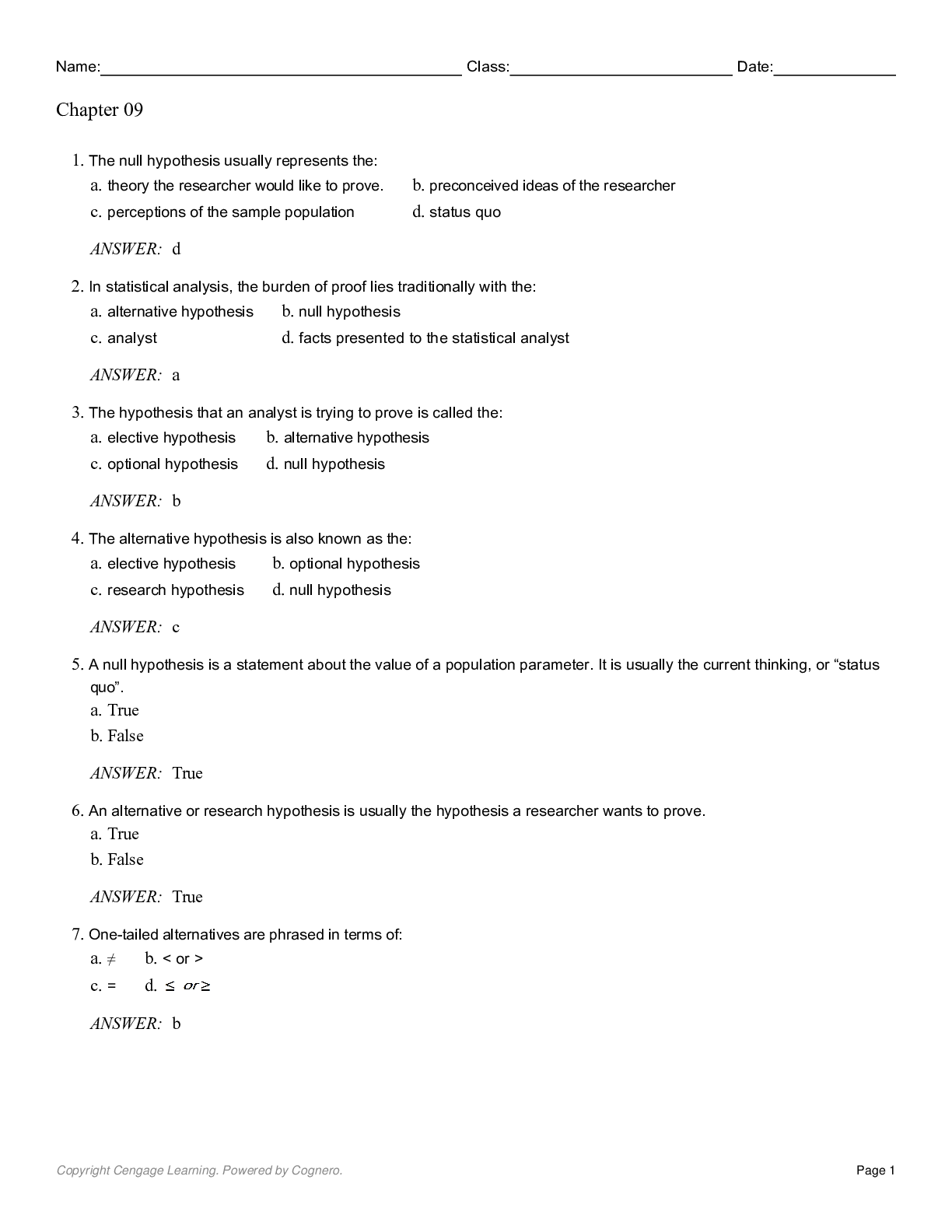Business > QUESTIONS & ANSWERS > Chapter 1: Business Analytics_ Data Analysis _ Decision Making 5th Edition Albright (All)
Chapter 1: Business Analytics_ Data Analysis _ Decision Making 5th Edition Albright
Document Content and Description Below
1. The decision-making concepts covered in Data Analysis & Decision Making book include which of the following? a. Optimization techniques b. Decision analysis with uncertainty c. Structured sensit... ivity analysis d. All of these options 2. Which of the following statements is not true? a. Dealing with uncertainty includes measuring uncertainty. b. Dealing with uncertainty includes modeling uncertainty explicitly into the analysis. c. Dealing with uncertainty includes eliminating uncertainty by using the normal probability distribution. d. Uncertainty is a key aspect of most business problems, and dealing with uncertainty requires a basic understanding of probability. 3. Which of the following is not one of the important themes of your Data Analysis & Decision Making book? a. Data analysis b. Dealing with uncertainty c. Decision making d. Data mining 4. Data analysis includes a. data description b. data inference c. the search for relationships in data d. All of these options 5. Which of the following is not one of the steps in the modeling process? a. Select scale for model. b. Collect and summarize data. c. Verify the model. d. Present the results to the organization. e. Implement the model and update it over time. 6. Which of the following would not be included under data analysis? a. Measuring uncertainty b. Data description c. Data inference d. Search for relationships Copyright Cengage Learning. Powered by Cognero. Page 1 Name: Class: Date: Chapter 01 7. The decision-making process includes a. optimization techniques for problems with no uncertainty b. decision analysis for problems with uncertainty c. structured sensitivity analysis d. All of these choices 8. Which of the following is not one of the types of models described in Data Analysis & Decision Making book? a. Algebraic model b. Spreadsheet model c. Scale model d. Graphical model 9. The modeling process discussed in Data Analysis & Decision Making book is a a. seven-step process b. six-step process c. five-step process d. four-step process e. three-step process 10. Which of the following is an Excel add-in for performing what-if analyses? a. PrecisionTree b. TopRank c. Solver d. @Risk e. StatTools 11. Which of the following statements are false? a. The modeling process discussed in Data Analysis & Decision Making book is five-step process. b. Dealing with uncertainty requires a basic understanding of probability. c. Uncertainty is a key aspect of most business problems. d. Data description and data inference are included under data analysis. Copyright Cengage Learning. Powered by Cognero. Page 2 Name: Class: Date: Chapter 01 12. Which of the following statements are false? a. Decision-making includes optimization techniques for problems with certainty, decision analysis for problems with certainty, and structured sensitivity analysis. b. Graphical models can be very helpful for simple problems. For complex problems, however, graphical models usually fail to show the important elements of a problem and how they are related. c. Dealing with uncertainty includes measuring uncertainty and modeling uncertainty explicitly into the analysis. d. All of these options 13. Which of the following statements are true? a. An alternative to algebraic modeling is spreadsheet modeling. Instead of relating various quantities with algebraic equations and inequalities, they are related in a spreadsheet with cell formulas. b. Data are usually meaningless until they are analyzed for trends, patterns, relationships, and other useful information. c. Algebraic models, by means of algebraic equations and inequalities, specify a set of relationships in a very precise way. Their main drawback is that they require an ability to work with abstract mathematical symbols. d. When we make inferences from data and search for relationships in data, or when we use decision trees to help make decisions, we must deal with uncertainty. e. All of these options 14. Which of the following statements are true? a. Three important themes run through the book. Two of them are in the title: data analysis and decision making. The third is dealing with uncertainty. b. Data analysis includes data description, data inference, and the search for relationships in data. c. Decision making includes optimization techniques for problems with no uncertainty, decision analysis for problems with uncertainty, and structured sensitivity analysis. d. Dealing with uncertainty includes measuring uncertainty and modeling uncertainty explicitly into the analysis. e. All of these options 15. Which of the following is an Excel add-in for simulation? a. PrecisionTree b. TopRank c. Solver d. @Risk e. StatTools Copyright Cengage Learning. Powered by Cognero. Page 3 Name: Class: Date: Chapter 01 16. Data analysis includes data description, data inference, and the search for relationships in data. a. True b. False 17. Decision-making includes optimization techniques for problems with certainty, decision analysis for problems with certainty, and structured sensitivity analysis. a. True b. False 18. Dealing with uncertainty includes measuring uncertainty and modeling uncertainty explicitly into the analysis. a. True b. False 19. The authors of the Data Analysis & Decision Making book described three types of models: graphical models, algebraic models, and spreadsheet models. a. True b. False 20. Graphical models are the least intuitive type of model. Its purpose is simply to provide enough quantitative details to enable us solve the problem of interest. a. True b. False 21. Three important themes run through this book: data analysis, decision making, and dealing with uncertainty. a. True b. False 22. Graphical models can be very helpful for simple problems. For complex problems, however, graphical models usually fail to show the important elements of a problem and how they are related. a. True b. False Copyright Cengage Learning. Powered by Cognero. Page 4 Name: Class: Date: Chapter 01 23. The overall modeling process typically done in the business world always require seven steps: define the problem, collect and summarize data, develop a model, verify the model, select one or more suitable decisions, present the results to the organization, and implement the model and update it over time. a. True b. False 24. Algebraic models, by means of algebraic equations and inequalities, specify a set of relationships in a very precise way. Their main drawback is that they require an ability to work with abstract mathematical symbols. a. True b. False 25. Data are usually meaningless until they are analyzed for trends, patterns, relationships, and other useful information. a. True b. False 26. An alternative to algebraic modeling is spreadsheet modeling. Instead of relating various quantities with algebraic equations and inequalities, they are related in a spreadsheet with cell formulas. a. True b. False 27. When we use simulation models to help make decisions, we do not deal with uncertainty at all, since we often must make inferences from the simulated data. a. True b. False 28. When we make inferences from data and search for relationships in data, or when we use decision trees to help make decisions, we must deal with uncertainty. a. True b. False 29. The @Risk is an Excel add-in that can be used to run replications of a simulation, keep track of outputs, create useful charts, and perform sensitivity analyses. a. True b. False Copyright Cengage Learning. Powered by Cognero. Page 5 Name: Class: Date: Chapter 01 30. Graphical models are probably the least intuitive and most quantitative type of model. a. True b. False Copyright Cengage Learning. Powered by Cognero. Page 6 Name: Class: Date: Chapter 01 [Show More]
Last updated: 1 year ago
Preview 1 out of 6 pages
Instant download

Buy this document to get the full access instantly
Instant Download Access after purchase
Add to cartInstant download
Reviews( 0 )
Document information
Connected school, study & course
About the document
Uploaded On
Jan 04, 2020
Number of pages
6
Written in
Additional information
This document has been written for:
Uploaded
Jan 04, 2020
Downloads
0
Views
108













